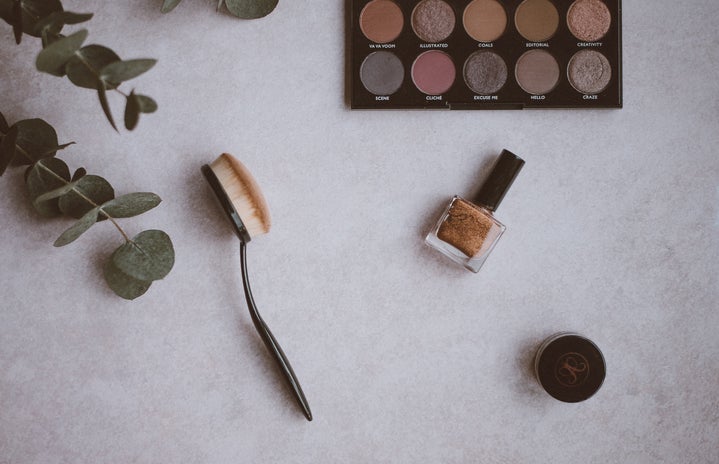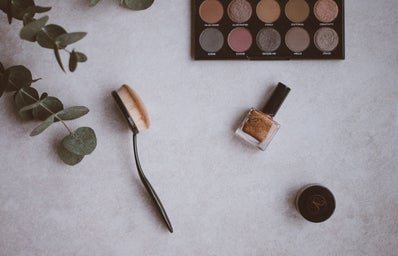Left image from Flickr/Right image from SimplyShredded
Fat: the forbidden ‘F’ word. It’s the one word that can’t be glamorized or accessorized to sound somewhat pleasing. A false image of beauty has been programmed into our minds that’s meant to represent an ideal illustration of perfection. This desire for attraction was once reliant on character and confidence rather than cup-size and cosmetics. Beauty has transformed from an innate quality to a product of consumption. And though we say we know, pounds of powder and loads of lipstick are incapable of masking any ugliness within.
Insomnia Cookies, eight slices of gooey, cheesy pizza, a mozzarella-infested calzone, and the all-holy Chipotle are available for dorm delivery within minutes. It’s no wonder the average woman’s BMI has risen from a mere 20 to a 26 since the ‘50s.
And yet, who cares? Since when did the pound of fat above your belly exceed the content of your character? I can tell you indisputably that I’d rather be chomping on Cheetos than swallowing mouthfuls of oxygen simply to obtain curves that resemble Kate Upton’s or Kim Kardashian’s (pre-Photoshop that is). Don’t get me wrong, being healthy and caring for your body is essential; but learning to love the rolls on your tummy and the pimples on your cheek is equally as important.
Easier said than done, I’m well aware. But hopefully a written plea from me will resonate a little more than your mom’s monotonous cliché that “beauty comes from within.”
Tan, tall, and thin with a nice rack and butt set the standard for beauty today. Miranda Jackson, a freshman journalism major, believes beauty has unbounded definitions.
“An individual’s perception of what is attractive is based on media influence, personal preference, and environmental factors,” she says.
Celebrities and models continue to set a standard for beauty across all mediums, expelling images of beauty that are unrealistic and unattainable. We all wish we had the body of a Victoria’s Secret model. There’s no denying that every time the Victoria’s Secret Fashion Show airs, half the female population is on their hands and knees on their bedside, praying for a “perfect body.” The other half, to clarify, is cuddled in sweatpants between Ben and Jerry.
For Jackson, “beautiful matters only if we’re talking about someone’s soul.” She admits that growing up with today’s standards of beauty is unlike any other generation.
“You can’t go anywhere these days without feeling some semblance of pressure to be the perfect, ideal version of yourself,” Jackson explains.
It all began with contact lenses. She thought that glasses equated ugliness and after incessant begging, went glasses-free. Then came wearing makeup, followed by losing weight. Pressures from streamlined lists of pictures, tweets, and posts about being thinner and prettier forced Jackson to adhere to current beauty standards and leave behind the natural beauty of her identity.
We all want what we don’t have. I want tan skin, but I closely resemble Casper the ghost. I want to be tall, but I look like a pale Oompa Loompa. Trust me, I can go on. However, this constant battle for perfection has not always been every woman’s foremost priority.
Just 25 years ago, the definition of beauty was defined by waifish androgyny. Women sought to be thin and pale like model Kate Moss. The “chubby woman” had gone extinct and a “boyish girl” was the ideal. Who would have guessed that looking like a pre-pubescent, 10-year-old boy would become so desirable? Rewind 10 years before that and beauty standards were, as I’m sure you can guess, completely different.
Neon leotards and legwarmers, the ‘80s brought the athletic, svelte-but-curvy body to the big screen. Robyn Parks, a mother of three, recalls growing up in the ‘80s as a time focused on the “importance of looking pretty and maintaining a girlish figure in order to get a boyfriend and eventually a husband.” The motives of exercise were to “maintain a thin body and athletic build” rather than “prevent disease and maintain good health,” explains Parks. Just watch a Richard Simmons exercise tape and you’ll get the idea. Even then, “media and Hollywood” set beauty’s precedents, making Brooke Shield’s thick eyebrows and Bo Derek’s tan, slim, and sexy body seem to be the norm.
To Parks, society today is “more complicated” because “much more is required of us.” And when today’s standards of beauty cannot be met (naturally that is), we turn to plastic surgery and cosmetics. And if anyone wishes to question this theory, Google search Kylie Jenner.
Flashback to the ‘70s: a time when free spirits reigned free. Lauren Rutkovitz, owner of A Style Studio, a clothing and cosmetics boutique in Baltimore, remembers growing up in the ‘60s and ‘70s. Times were different and people were “more individual,” she recalls.
“Everyone today is concerned about their body image,” Rutkovitz complains.
Her adolescence was not captured by selfies or posted online with falsified edits and saturated filters.
“If you had bad skin as a teen, you dealt with it,” she remembers.
Now, however, girls can’t seem to leave the house without a mask of makeup. Since when did hiding behind bronzer and blush define beauty?
Sixty-five years ago, women were plain. They had “plainer hair cuts, plainer clothing, and plainer makeup. In fact, women rarely even wore makeup,” recalls Susan Belle, a grandmother of six. She remembers growing up in the ‘50s when curvy, hourglass figures framed the definition of beauty. Frankie J’s profound lyrics “She got a body like a Coke bottle” almost perfectly paints a portrait of what beauty looked like in the Golden Fifties.
“When I was young, people weren’t so health and weight conscious,” recalls Belle. “Appearance simply wasn’t our priority as it seems to be today.” Belle proclaims that she “didn’t wear makeup until [her] 30s.”
So basically, she didn’t wear makeup to her senior prom, her first college party, or even to her own wedding? Call me vain or a product of the “virtual invasion of social media,” but I can’t even imagine going out on Saturday night without some bronzer and mascara. Belle paints a beautiful picture, explaining that we must “find beauty in life and not in the mirror.”
Don’t we all just wish we could go back to the ‘50s when Sandy in her poodle skirt and Danny in his leather jacket were sipping milkshakes at a diner without worrying about the fattening effects their milkshake? But I digress. With each decade, beauty presents itself differently, ultimately concluding that beauty is a manifestation of our own imaginations and that the evolution of perfection will persist whether its standards are met or not.
Beauty never dies. With every decade, beauty is reborn in alternative forms that are often genetically and physically unattainable. Centuries ago, full-bodied women were idolized. But by the 1920s, thin was in and even an ounce of fat was detestable. Bound boobs or big boobs, white skin or golden skin, stick figure or curvy figure; perceptions of perfection are indefinable. As time progresses, so will beauty. Undeniably, women will attempt to alter their identity by adapting to society’s newest definition of beauty. With a constant craving for perfection, women are more vulnerable than ever to the dangers that pervade the all-too-vague concept of beauty. By pinpointing the root of this new age of self-effacement and exposing the hidden truths about the way we see ourselves, we can finally identify necessary steps on our path toward our personal definition of perfection.


